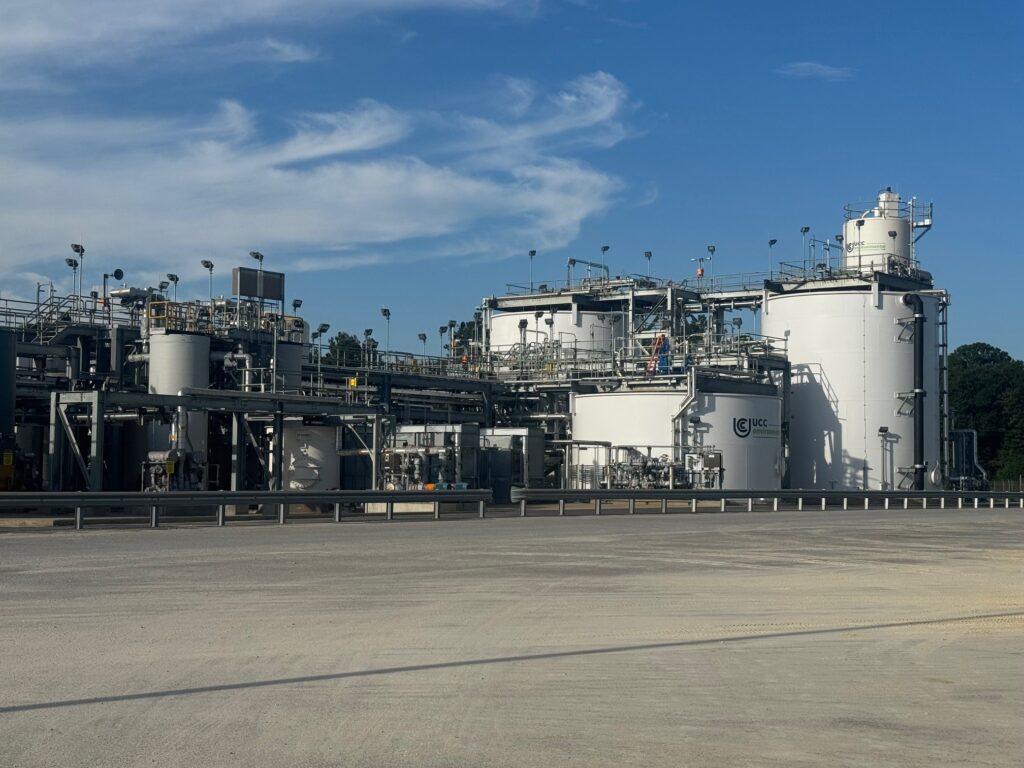
UCC Stands Ready to Support Your ELG Compliance Needs
The Environmental Protection Agency (EPA) finalized its Effluent Limitation Guidelines (ELG) which focuses on managing industrial wastewater. Specifically, the ELG rule establishes standards for discharging pollutants from various industrial sources into water bodies to safeguard water quality and protect aquatic ecosystems.
Why is it important to coal-fired utilities?
Compliance with ELG regulations is imperative for coal-fired power plants, which rely heavily on water for their operations. Adhering to ELG standards requires non-compliant facilities to develop and implement robust water management strategies. Such strategies encompass a range of practices and technologies aimed at minimizing water use, treating wastewater effectively, and ensuring compliance with regulatory requirements. In this context, having a comprehensive water management strategy is a regulatory obligation and a fundamental aspect of sustainable and responsible industrial operations.
Are you considering extending your coal plant retirement date and investing new environmental compliance needs?
With retirement timelines shifting, now is the time to address deferred maintenance and evaluate new technologies that were previously out of reach. Whether you need to extend the life of your plant, manage coal combustion residuals, or ensure compliance with air emissions standards, UCC offers cost-effective, proven solutions. Let’s talk about how UCC can help your power plant achieve long-term compliance and operational excellence.

UCC Water Management Program
At UCC, we pride ourselves on our comprehensive water management program, which is thoughtfully designed to address every aspect of industrial wastewater regulations outlined by ELG. From groundwater to contact water, pore water, combustion residual leachate, flue gas desulfurization (FGD), and stormwater, as well as bottom ash transport water, each water stream must be meticulously monitored, treated, and managed to ensure compliance with stringent environmental standards. UCC’s commitment extends beyond mere regulatory compliance; it embodies a dedication to environmental stewardship and sustainability. Our holistic approach to water management for each of your facilities fulfills regulatory obligations through advanced site-specific treatment technologies, rigorous monitoring protocols, and proactive measures while upholding our responsibility to minimize the environmental impact and safeguard the integrity of local ecosystems and water resources.
Meeting the ELG Compliance Timeline
Navigating the compliance timeline outlined by the EPA’s ELG regulations demands precision and foresight. UCC understands that meeting these deadlines is essential for regulatory adherence and avoiding potential operational penalties or disruptions. Leveraging our expertise in environmental engineering and regulatory compliance, we provide tailored solutions to help ensure that our customers meet their obligations within the prescribed timeframe. From conducting comprehensive assessments to identify areas of improvement to implementing efficient treatment technologies and optimizing operational practices, we partner with customers to develop customized strategies that expedite the compliance process. By partnering with UCC, customers can be assured that their compliance needs will be on time, allowing them to focus on their core business activities with confidence.
Strategies for ZLD Compliance
Compliance with regulatory standards is achieved through a structured and proactive process. A defined strategy ensures legal adherence, shielding customers from potential fines, penalties, or complications arising from non-compliance. Additionally, a structured approach to compliance enhances operational efficiency by streamlining processes, reducing risks, and improving overall management practices. By prioritizing a comprehensive compliance strategy, customers can enjoy enhanced regulatory and operational benefits, positioning them for sustained growth and long-term success.
Understanding the Regulations and Compliance Deadlines
Schedule Development
Piloting and Bench-Scale Testing
Water Balance and Process Chemistry Optimization
EPC Turnkey Project Estimates
CAPEX and OPEX Projections
Water Types Impacted by ELG
Groundwater
Contact Water
Combustion Residual Leachate (CRL)
Bottom Ash Transport Water (BATW)
Flue Gas Desulfurization (FGD)
Stormwater
How can we help?
Our team of experts are happy to help answer any questions you have about UCC’s water solutions.

